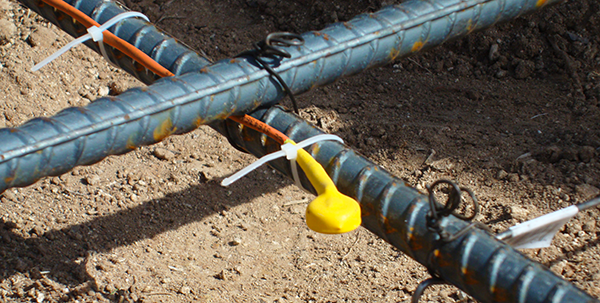COMMAND Center™ measures and records internal concrete temperatures as required by specifications for thermal control plans, hot and cold weather concreting, and mass placements
COMMAND Center™ temperature sensors automatically collect concrete temperatures at regular intervals during curing. Construction teams use COMMAND Center™ to ensure concrete temperatures stay within an acceptable range.
COMMAND Center™ Sensors arrive preconfigured to automatically track and record temperatures. No initialization is required, so construction teams don’t even need to connect to the sensor during placement. Simply secure the sensors in place, pour the concrete over them, and use any compatible COMMAND Center™ reader to view and analyze the concrete’s temperature history at any time.
When receiving a delivery of fresh concrete, construction teams typically embed a common thermometer into the concrete to measure its temperature. However, a thermometer will not measure and record temperature continuously at regular intervals to identify what the maximum internal concrete temperature is achieved during curing. In addition, a thermometer will not work for monitoring temperature differentials between the core and surface of massive elements as typically required by job specifications and defined by a thermal control plan.
When the internal temperature of a concrete element is in danger of breaching maximum or minimum temperature thresholds, data provided by embedded COMMAND Center™ Sensors will allow the construction team to take measures to prevent the concrete from exceeding these thresholds.
Benefits of Using COMMAND Center™ to Monitor Concrete Temperatures





